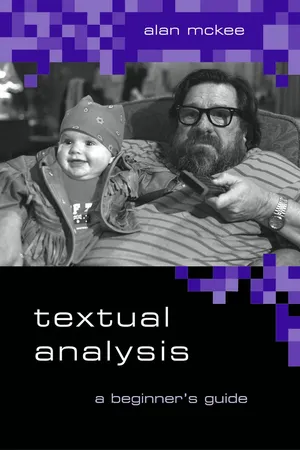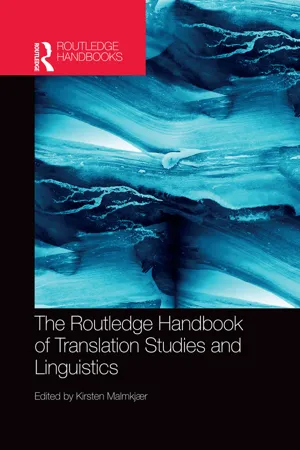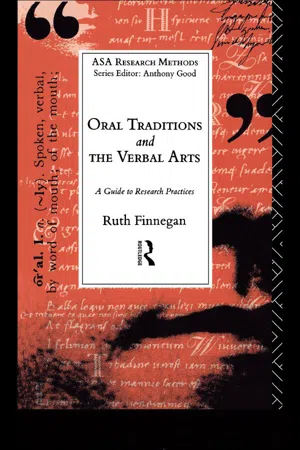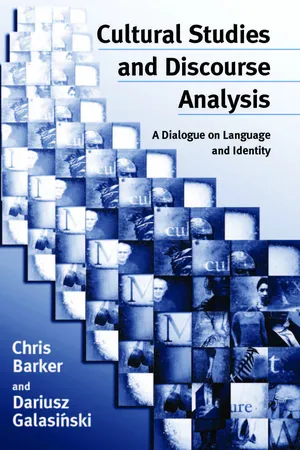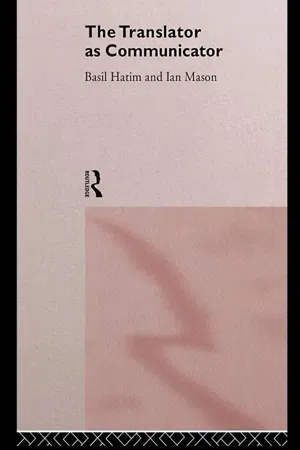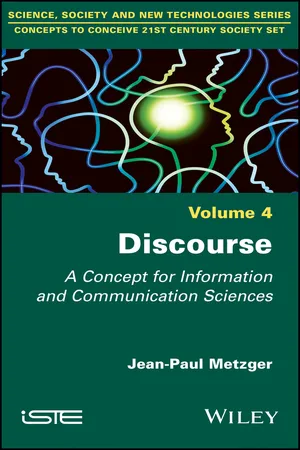Languages & Linguistics
Textual Analysis
Textual analysis is a method of examining and interpreting written, spoken, or visual texts to understand their underlying meanings, themes, and structures. It involves close scrutiny of language, style, and rhetorical devices to uncover the intended messages and implications within the text. This approach is commonly used in literary studies, media studies, and communication research to gain insights into the nuances of language and communication.
Written by Perlego with AI-assistance
10 Key excerpts on "Textual Analysis"
Learn about this page
Index pages curate the most relevant extracts from our library of academic textbooks. They’ve been created using an in-house natural language model (NLM), each adding context and meaning to key research topics.
- eBook - ePub
Textual Analysis
A Beginner's Guide
- Alan McKee(Author)
- 2003(Publication Date)
- SAGE Publications Ltd(Publisher)
What is Textual Analysis?
1
What is Textual Analysis?
Textual Analysis is a way for researchers to gather information about how other human beings make sense of the world. It is a methodology – a data-gathering process – for those researchers who want to understand the ways in which members of various cultures and subcultures make sense of who they are, and of how they fit into the world in which they live. Textual Analysis is useful for researchers working in cultural studies, media studies, in mass communication, and perhaps even in sociology and philosophy.Let’s open with a straightforward description What is Textual Analysis? When we perform Textual Analysis on a text, we make an educated guess at some of the most likely interpretations that might be made of that text.We interpret texts (films, television programmes, magazines, advertisements, clothes, graffiti, and so on) in order to try and obtain a sense of the ways in which, in particular cultures at particular times, people make sense of the world around them. And, importantly, by seeing the variety of ways in which it is possible to interpret reality, we also understand our own cultures better because we can start to see the limitations and advantages of our own sense-making practices.Is that the only way to study texts?
Of course, I’m trying to make things simple here, and nothing is really that simple. This book only introduces one version of Textual Analysis. Academics who do ‘Textual Analysis’ actually practise a huge range of methodologies – many of which are mutually contradictory and incompatible (for a sense of this range, see Allen, 1992). This book explains a form of ‘Textual Analysis’ whereby we attempt to understand the likely interpretations of texts made by people who consume them. This is not the only ‘correct’ methodology for gathering information about texts. Other approaches can also produce useful information: no approach tells us the ‘truth’ about a culture. It’s important to realize that different methodologies will produce different kinds of information – even if they are used for analysing similar questions. - Kirsten Malmkjaer, Kirsten Malmkjaer(Authors)
- 2017(Publication Date)
- Routledge(Publisher)
Discourse analysis is closely related to text linguistics, in that the object of study is also language use beyond the boundaries of discrete sentences. Both are concerned with the social contexts of language use, with the social purposes and functions of language in social interaction. It is, in fact, difficult to make a clear distinction between the concerns of discourse analysis and those of text linguistics without making a distinction between discourse and text. Some scholars have argued for a distinction based on modality (spoken vs. written). Others have said that texts are non-interactive while discourses are interactive. But, for the most part there has been no consensus, and one is inclined to agree with Crystal (2011, 1) that discourse analysis and text linguistics are more or less the same.In this chapter, for clarity of argument as well as limitations of space, we focus quite narrowly on text linguistics as associated with the work of specific scholars whose frameworks have been adopted broadly into translation and interpreting studies: Teun van Dijk, M. A. K. Halliday and Ruqaiya Hasan, and Robert de Beaugrande and Wolfgang Dressler. A common thread among these authors is the idea that speakers or writers of texts make deliberate, patterned language choices from a potential set of available choices (the language system) and that those choices are related to the situation in which the language is used. The pattern of choices is recognisable in the linguistic and semantic structures of a text.Within text linguistics broadly, so-called “text grammatical” approaches emphasise that the “selection” of sentences that appear in a text (and their lexical and structural properties) can be described in a formal manner as a rule system. The recourse to the notion of rules places text grammars in the context of formal models of sentence grammars, but with a broader scope – where the focus is not on the syntactical arrangement of words in sentences (traditional syntax), but on the arrangement of sentences within the larger construct of the text itself and of the semantic and lexical relationships between sentences. The earliest well-known proponent of this perspective is van Dijk, who was central in early attempts to specify the kinds of relationships that might exist between sentences; he focused on global textual meaning relationships between sentences as well as formal organisational ones – these patterns of relationship were called “macrostructures” and “macropropositions” (van Dijk 2004).- eBook - ePub
Oral Traditions and the Verbal Arts
A Guide to Research Practices
- Ruth Finnegan(Author)
- 2003(Publication Date)
- Routledge(Publisher)
8 Analysing and comparing texts: style, structure and contentMost accepted methodologies within literary and linguistic study can in principle be applied to oral texts once they are represented in written form. Indeed Textual Analysis has often been taken as the method for studying verbal forms, following the model of text as something bounded and organised, a unit through which the traditional methods of philological and literary scholarship can be extended to unwritten forms. Rather than trying to cover all these methodologies, I have concentrated here on those particularly exploited in analysing oral forms (with some brief further discussion in 8.5 ). I have also mainly left to one side the problematics within the concept of text (on which see 1.4 ) or its broader sense as ‘any coherent complex of signs’ (Bakhtin 1986:103), so the focus here, as in most traditional forms of Textual Analysis, is primarily on textsas-verbal.The presentation is within a vaguely historical order, but methodologies in practice overlap in time and coverage, and ‘old’ methods take on new twists. Some topics such as typology or narrative could have been treated under several heads, while terms like ‘style’ and ‘structure’ can be interpreted in differing senses (here ‘style’ is mainly taken as lower-level aspects, ‘structure’ as more the overall form and its constituent divisions). Amidst these continuing over-laps and ambiguities, the categories and ordering here are for convenience not definitive classification.8.1 Textual Analysis: PROBLEMS AND OPPORTUNITIES
There are continuing arguments about the value of focusing on verbal texts. Some issues are broadly theoretical and concern such questions as the evaluation of contrasting perspectives for studying oral forms or problems in the concept of ‘text’. Others relate to practical questions of access or resources. It may thus be as well not to take it for granted that analysing the verbal text-as-given is the only possible focus, but also to weigh up such questions as the following: - eBook - ePub
Cultural Studies and Discourse Analysis
A Dialogue on Language and Identity
- Chris Barker, Dariusz Galasinski(Authors)
- 2001(Publication Date)
- SAGE Publications Ltd(Publisher)
Fairclough argues that interTextual Analysis is useful in discovering the networks which texts move through including the transformations they undergo as they shift from one site to another (for example, the journey of a political speech or a press release as it becomes a news story). Further, the assumption of intertextuality makes manifest the historicity of texts. Texts are the product of other culturally situated texts combined into a new structure. The exploration of intertextuality helps uncover what Fairclough calls the ‘orders of discourse’ of a social domain. That is:the totality of its discursive practices, and the relationships (of complementarity, inclusion/exclusion, opposition) between them – for instance in schools, the discursive practices of the classroom, of assessed written work, of the playground, and of the staff room. The order of discourse of a society is the set of these more ‘local’ orders of discourse and the relationships between them. (Fairclough, 1995a: 132)The linguistic tools of discourse analysis
In this section we explore the fault-lines which discourse analysis searches for during the dissection of texts. We are seeking to achieve an analytic template that could be deployed in the analyses of cultural texts through reviewing the analytic categories by which a discourse analyst is likely to scrutinize texts.There are two ways in which this task can be achieved. On the one hand, the discussion can be framed in terms of ‘levels of language’ (Fairclough, 1989, 1992). Thus, a text is approached as vocabulary, grammar and textual structure. On the other hand, an analytical template can be designed in terms of textual functions (Fowler, 1991).While there are good reasons for discussing the material in either way, we have decided on the latter approach (i.e. discussion in terms of the text functions) in order to keep the problems of representation, interaction and textual form analytically separate. As our interview data are largely non-interactive, and, moreover, it is their representational aspects that we are particularly interested in, a clear distinction between textual functions should make for a more lucid and precise discussion of the data. However, other ‘templates’ will provide us with a useful crosschecking of our exposition. - eBook - ePub
- Kirsten Malmkjaer, Kirsten Malmkjaer(Authors)
- 2009(Publication Date)
- Routledge(Publisher)
TText linguistics
Background
As Hoey points out (1983–4: 1),The distinction Hoey mentions is made in this volume on practical, not theoretical grounds, and the overlap between text linguistics and discourse and conversation analysis should be borne in mind.there is a tendency … to make a hard-and- fast distinction between discourse (spoken) and text (written). This is reflec-ted even in two of the names of the discipline( s) we study, discourse analysis and text linguistics. But, though the distinction is a necessary one to maintain for some purposes … it may at times obscure similarities in the organisation of the spoken and written word.Early modern linguistics, with its emphasis on discovering and describing the minimal units of each of the linguistic levels of sound, form, syntax and semantics, made no provision for the study of long stretches of text as such; traditional grammatical analysis stops at sentence length. It is even possible to argue that ‘the extraction of tiny components diverts consideration away from the important unities which bind a text together’ (de Beaugrande and Dressler 1981: 21) and, although Zellig Harris (1952) had proposed to analyse whole discourses on distributional principles, employing the notion of transformations between stretches of text, this emergent interest in text and discourse study was lost at the time in Chomsky’s modification of the notion of transformation to an intrasentential phenomenon. - eBook - ePub
Scientific Discourse in Sociohistorical Context
The Philosophical Transactions of the Royal Society of London, 1675-1975
- Dwight Atkinson(Author)
- 1998(Publication Date)
- Routledge(Publisher)
The present research design is therefore an attempt to bring independent but complementary methodologies of discourse analysis together in order to describe the development of scientific research writing more fully and adequately. In particular, by supplementing the rhetorical text-analytic approach with MD analysis, an important quantitative linguistic dimension is added to the rapidly growing body of knowledge concerning the textual aspects of historical and modern-day scientific research writing. 3 RHETORICAL ANALYSIS: GENERAL DESCRIPTION Bazerman (1988, chap. 1, note 1) characterizes the methodological approach that he originally took to studying scientific writing as follows: Primarily it consists of close textual reading and historical contexting. The textual readings are all framed by recognition of traditional literary devices, and have been intensified by new critical insistence on the text in itself. However, other modes of criticism have suggested the application of interpretive frameworks from other disciplines, such as linguistics, psychology, sociology, anthropology, and philosophy. Such imported frameworks are justified in two ways: Either they represent fundamental truths so that they cannot help but influence texts, or the writer on some level was aware of such ideas and constructed parts of the text upon them. Historical contexting has served a variety of functions, from simply providing a decorative framework…to offering a complete account for the creation and meaning of a historically bound text. On occasion text and context have been drawn more tightly together to view the text as a historical event within the unfolding context…. An extended repertoire of concepts and tools has also come out of the teaching of writing - eBook - ePub
- Kristina Bedijs, Christiane Maaß, Kristina Bedijs, Christiane Maaß(Authors)
- 2017(Publication Date)
- De Gruyter(Publisher)
Text Linguistic Approaches to Language in the MediaPassage contains an image Martina Schrader-Kniffki
2Text Linguistic Approaches I: Analysis of Media Texts
Abstract: Text linguistics as one key discipline in linguistic media research is nowadays challenged with an increased complexity of its subject. Media texts in tertiary media are often multimodal and address various semiotic dimensions through (hyper)text, moving or still pictures, sound, and graphic effects. This article outlines theoretical approaches to the analysis of media texts in the era of multimodality with a focus on film and television text, which are usually characterized by linearity and a separation of the producer and the receiver, as well as hypertext, which is characterized by nonlinearity and interactivity. Borders of texts, especially in online contexts, are becoming more and more blurred and require new analytical approaches.Keywords: film, hypertext, interactivity, linearity, multimodality, television, text linguistics1Introduction
It is a generally accepted assumption that due to recent and ongoing technical innovation, text and media text are undergoing profound changes which interact with alterations in society. The general claim of the growing “visuality of society” indicates the nature of change that not only society but especially communication and text are experiencing (cf. Sutter/Mehler 2010): Lesser importance is being given to the written word, whereas other semiotic modalities, mainly visualization and design (cf. Eckkrammer/Held 2006, 1) take over the “informational weight” and seem to make written information almost superfluous (cf. Eder/Eckkrammer 2000). The dynamism of media change is bound to technical innovation. Research areas such as media studies, cultural studies, and linguistics are in the process of modeling the textual and linguistic innovation that emerges out of the processes of technological progress. Text linguistics as area of linguistic research that traditionally takes into consideration the complexity of language use in communication is the genuine field of research and theory-building that responds to the mentioned changes. - eBook - ePub
- Basil Hatim, Ian Mason(Authors)
- 2005(Publication Date)
- Routledge(Publisher)
Chapter 3 Interpreting: a text linguistic approach
The principal aim of this chapter is to explore possible applications of text linguistics to the training of interpreters. Focusing on those aspects of our discourse processing model which relate to the oral mode of translating, we shall see how distinctions such as the static vs. the dynamic (Chapter 2 ) are of concern to the interpreter as well as the translator. Rather than emphasizing differences due to field of translating, mode of translating or translator focus, we will in this chapter explore areas of common interest in the processing of texts. The central theme however is interpreting. In particular, the three strands of textuality— texture, structure and context—will be shown to correlate in a number of interesting ways and to varying degrees of relevance, with the three basic forms of interpreting— liaison, consecutive and simultaneous.HOW TEXTS HANG TOGETHER
The three basic domains of textuality identified in Chapter 2 are texture, structure and context. The term ‘texture’ covers the various devices used in establishing continuity of sense and thus making a sequence of sentences operational (i.e. both cohesive and coherent). We can illustrate the operational nature of texts with the help of a number of examples seen from the perspective of oral translating. Our first Sample (3.1 ) is taken from the edited text of President Bush’s declaration on 25 February 1991 concerning strategy in the Gulf War.Sample 3.1
(…) (1) The coalition will, therefore, continue to prosecute the war with undiminished intensity. (2) As we announced last night, we will not attack unarmed soldiers in retreat. (3) We have no choice but to consider retreating combat units as a threat, and respond accordingly. (4) Anything else would risk additional coalition casualties. (…) - eBook - ePub
Language, Literature and Critical Practice
Ways of Analysing Text
- David Birch(Author)
- 2005(Publication Date)
- Routledge(Publisher)
An important part of this type of text analysis, therefore, is to use the language of the poem to give evidence for making arguments about the formal relations of the poem and its diction in order to determine themes. These themes are what will give you the clue to understanding the poem, but they need to be interpreted. For that, Nowottny argues, you need to go beyond the poem. With this poem she uses Freudian analysis, as well as a vast array of intertextual literary allusions that I’ve not covered here. These, together with an understanding of the situation in which the poem was produced (in this case wartime) will enable an analyst to sort out the complexities of meaning. Central to this method is a system that first and foremost uses language as the ‘entrance’ to ‘what the diction can tell us about itself through characteristics that recur with sufficient frequency and emphasis to suggest that some pressure of meaning has extruded these curious forms’ (193). Her close reading, then, follows a path of trying to understand how situational/contextual features determine the internal organization of the text—a path that marks, very specifically, a functional linguistic approach. Metaphor—the rhetorical channel—is the mode that, for the more literary-minded Nowottny (but using the words of functional linguist Michael Halliday), ‘tends to determine the range of meaning as texture, language in its relevance to the environment’ (Halliday, 1978: 117). She concentrates in her analysis on what Halliday calls the textual function of language, that is, the way text relates to its environment, by looking at words (lexis), lexical collocation and repetition; she looks on information structure as rhetoric and examines cohesive ties in the rhetoric of the text. What she does, therefore, is to privilege the status of the text and the textual/poetic function that she argues determine the text as literature. As a consequence she privileges the writer, not the reader - eBook - ePub
Discourse
A Concept for Information and Communication Sciences
- Jean-Paul Metzger(Author)
- 2019(Publication Date)
- Wiley-ISTE(Publisher)
Systematic analysis tests concepts and procedures and, at the same time, could introduce a new dimension to language science, that of the non-linguistic facts on which the discourse is based. Taking into account the influence of these facts on the production of statements should help to solve strictly linguistic problems. Systematic analysis can make a useful contribution to the theory of enunciation (Benveniste 1966) and the theory of the logic of language (Grize 2003).1 Production conditions: expression, with a Marxist connotation, which here refers to all the economic, social, legal or psychological factors that determine the discourse produced.2 It should be noted that Zellig Harris’ conception of discourse analysis is quite different from that described in Chapter 5 (sociolinguistic analysis).3 It is interesting to note that linguistics turned to the study of the functioning of discourse from the point of view of language at the same time as the techniques of automatic translation, automatic summary production and analysis of textual data introduced a form of experimentation into linguistics.4 A scientific method requiring the systematic use of experiment to test hypotheses and acquire positive knowledge.Passage contains an image
7 Documentary Analysis
Following several content analysis specialists (Stone et al. 1966; Heny and Moscovici 1968; Bardin 2013), we consider documentary analysis to be a variant of content analysis. The specific feature of documentary analysis is that it is part of a system for the accumulation, analysis and conservation of documents and access to some of the documents thus recorded.7.1. Representation of the content
